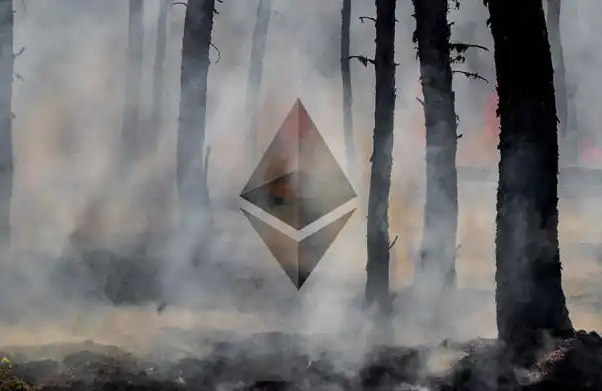Feeling Cold? ETH Daily Burn Hits All-Time Low as Active Address Count Reaches Six-Month Low
Original Article Title: "Is Ethereum Being Unused? Daily Burn Hits New Low 'Disinflationary Asset,' ETH Active Addresses Explore Half-Year Low"
Original Article Author: James, from BlockTempo
When Ethereum implemented the London upgrade in August 2021, it introduced EIP-1559, which simplified the transaction fee mechanism and required the network to burn all ETH used to pay the base fee. The purpose of this mechanism is to reduce inflationary pressure and potentially turn Ethereum into a deflationary asset during times of high network activity.
Daily ETH Burn Hits Historic Low
However, according to The Block data, Ethereum's network only burned 53.07 ETH on a single day last Saturday, which, at the current price, is worth only about $10.6k, setting a new historical low.

Image Source: The Block
Additionally, according to Ultrasound.money data, if the past seven days' burn rate is considered, the estimated annual supply growth rate of Ether would be 0.76%.

Image Source: Ultrasound.money
This low burn rate coincides with the decline in other Ethereum activity metrics, such as the number of active addresses. According to The Block data, the seven-day moving average of active addresses has recently dropped to its lowest point since October 2024, and metrics like new address creations, transaction counts, and daily transaction volume have also seen a decline in the past few weeks.

Image Source: The Block
Ethereum Foundation Plans Directional Adjustment
Amid Ethereum's stagnation, Standard Chartered Bank has recently significantly reduced its price prediction for Ethereum in 2025, from the original $10,000 to $4,000. The reason cited is the rapid growth in both the quantity and scale of Ethereum's Layer 2 solutions.
In its report, Standard Chartered Bank pointed out that Ethereum is currently at a crossroads. While its various metrics still dominate the blockchain space, this dominance is gradually waning. Ethereum's proud Layer2 network, originally designed to enhance Ethereum's scalability, has so far only seen Coinbase's Layer2 network, Base Chain, reduce Ethereum's market cap by $500 billion.
To halt this ongoing trend, Standard Chartered Bank believes that the Ethereum Foundation needs to change its business direction, such as implementing a tax on Layer2. Additionally, if the tokenization market experiences significant growth, Ethereum may be able to maintain around an 80% share of the market in terms of security, which could provide some support for Ethereum.
Facing a trust crisis, Dragonfly's managing partner Haseeb Qureshi recently revealed that the Ethereum Foundation is actively responding to community feedback and considering adjusting its operational focus. The leadership is seriously contemplating how to draw lessons from other success stories, especially Solana's Superteam model, shifting its focus from pure research to promoting project development and investment activities.
Welcome to join the official BlockBeats community:
Telegram Subscription Group: https://t.me/theblockbeats
Telegram Discussion Group: https://t.me/BlockBeats_App
Official Twitter Account: https://twitter.com/BlockBeatsAsia
 Forum
Forum OPRR
OPRR Finance
Finance
 Specials
Specials
 On-chain Eco
On-chain Eco
 Entry
Entry
 Podcasts
Podcasts
 Activities
Activities









